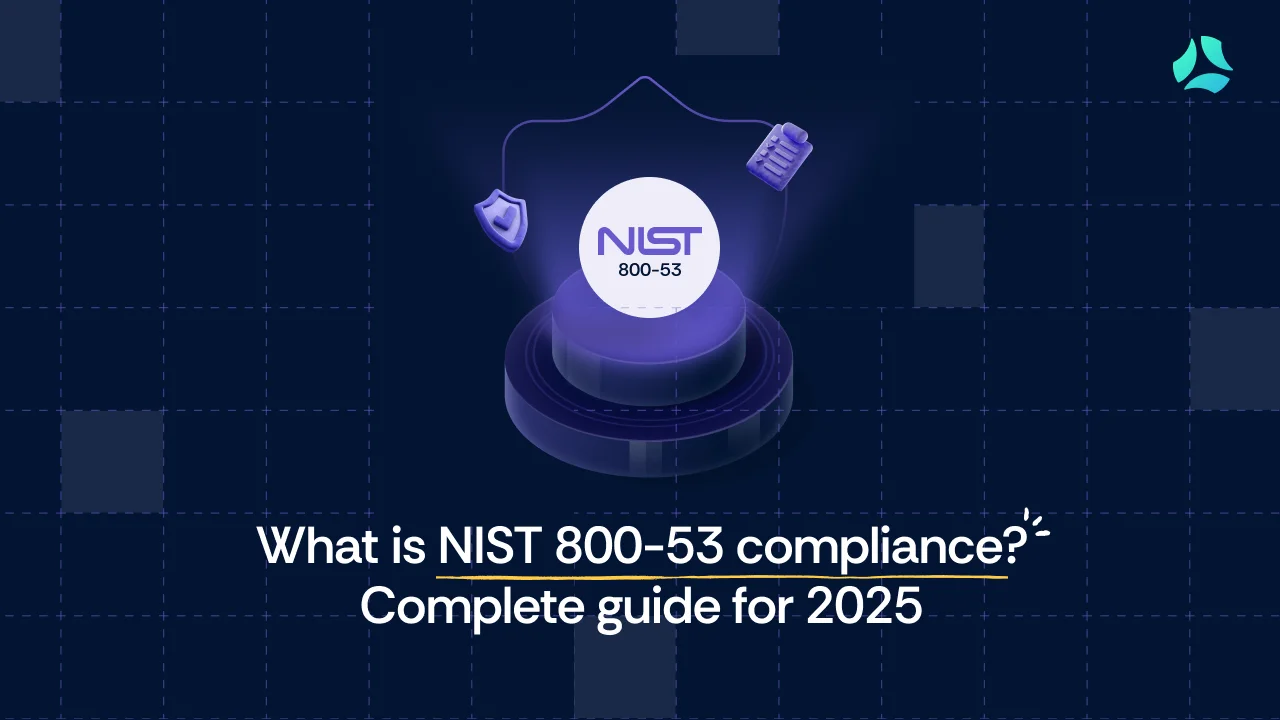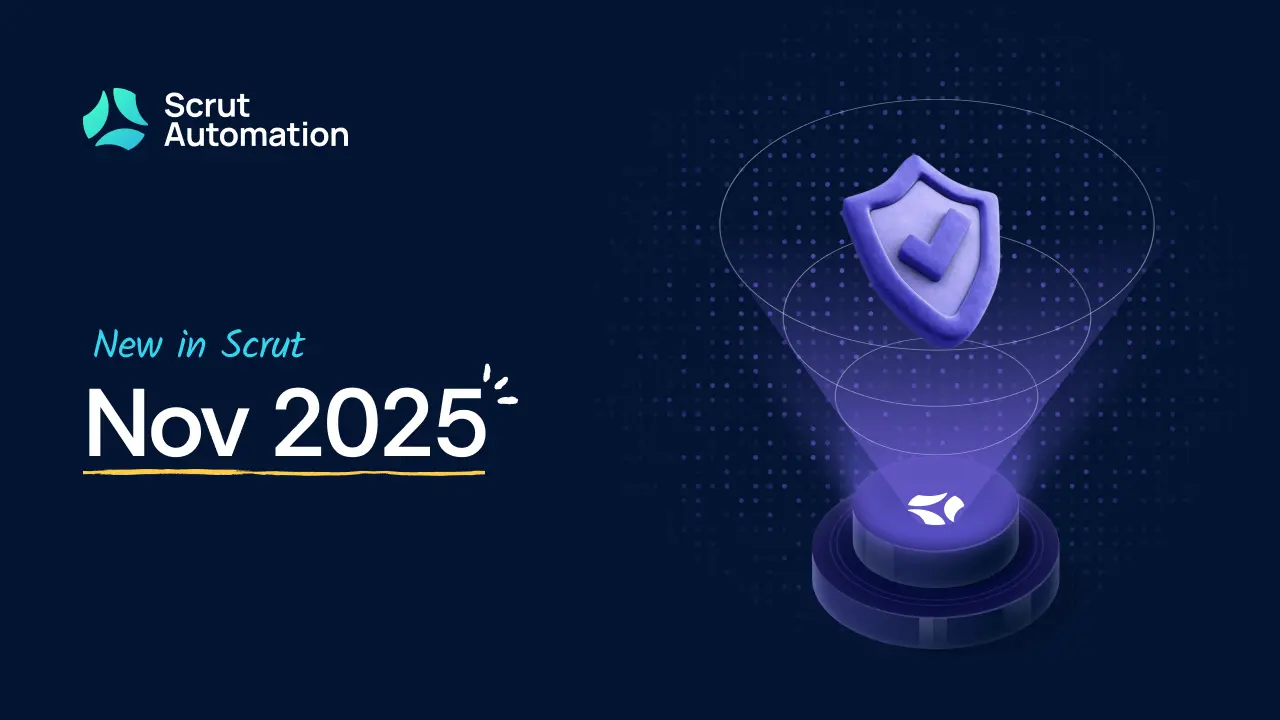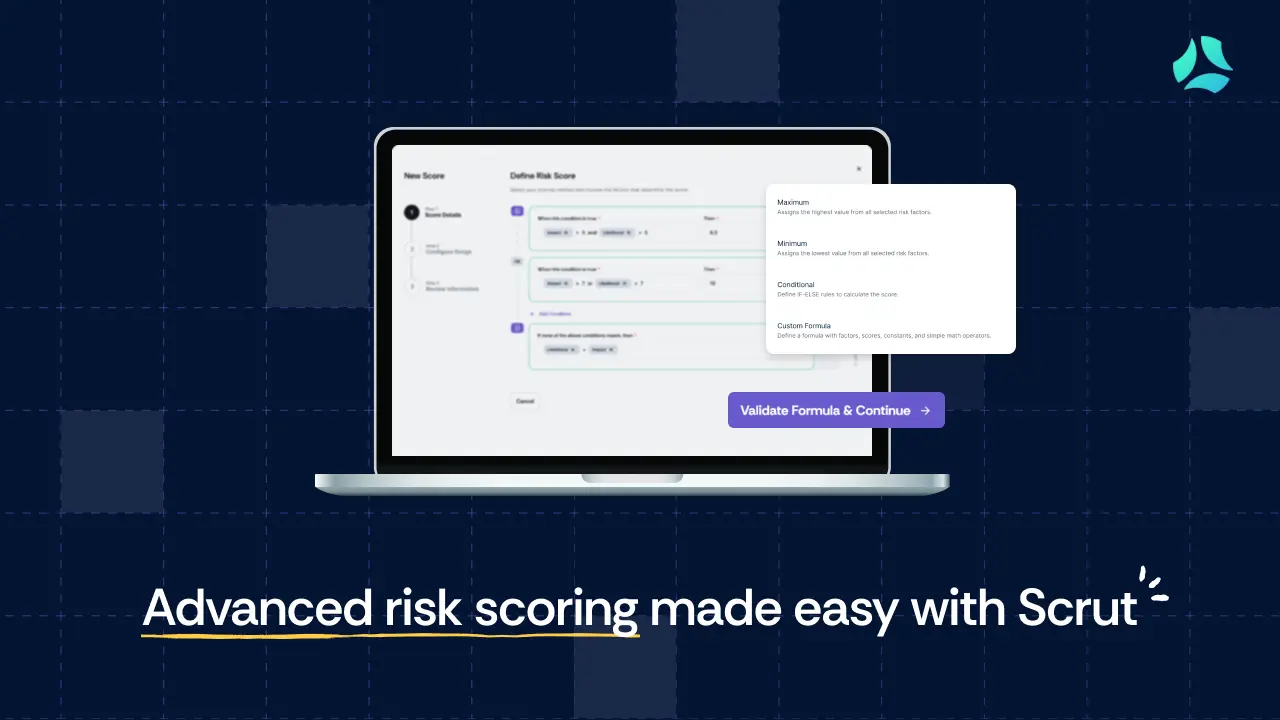What Is NIST 800-53 Compliance? Complete Guide for 2025

If you're a U.S. federal agency or a vendor working with one, NIST 800-53 compliance isn't optional. It's mandated by the Federal Information Security Modernization Act (FISMA) and enforced across the U.S. government.
But meeting the standard? That’s where things get complex.
The NIST 800-53 compliance framework includes hundreds of detailed, technical security and privacy controls across 20 control families. The latest revision, Rev 5, also integrates supply chain risk management, a key area added. The framework is comprehensive and continuously updated to address evolving threats and technologies.
This guide breaks it down for you: We’ll cover who needs to comply, how the control families work, what implementation really looks like in 2025, and how to simplify audits with the right approach.
What is NIST 800-53, and why does it matter in today’s compliance landscape?
NIST SP 800-53 is a set of security and privacy controls for federal information systems. Developed by NIST and updated with input from agencies like the Department of Defense (DoD) and Office of the Director of National Intelligence (ODNI), it serves as the foundation for how U.S. government data should be secured.
The latest version, Revision 5, was released in September 2020. It expands the control set to address modern risks like supply chain threats and privacy concerns. Notably, Revision 5 incorporates controls for supply chain risk management and those related to the processing of personally identifiable information (PII) and transparency with existing families.
So why does this matter?
Because under FISMA, federal agencies and their contractors must follow NIST’s security guidance. That makes NIST 800-53 compliance more than just a best practice. It’s a contractual obligation. If your organization handles government data, these are the controls you need to implement. Falling short can delay system authorizations or put government contracts at risk.
Who needs to comply with NIST 800-53?
Compliance with NIST 800-53 is primarily required for U.S. federal agencies and entities that operate or support federal information systems. This includes federal departments and agencies and state or local entities handling federal data subject to FISMA.
Contractors also need to comply depending on contract terms and the sensitivity/impact level of the data, for example, FIPS 199 high or moderate systems.
Some private-sector companies also choose to adopt NIST 800-53 controls as a best practice. Programs like Federal Risk and Authorization Management Program (FedRAMP), for example, require using SP 800-53 controls for cloud services. Knowing who needs to comply helps you understand your responsibilities under federal law.
Core components of NIST 800-53
The NIST 800-53 is built around several key elements. The main pieces are control families, impact levels, and the Risk Management Framework (RMF). Each shapes how your organization implements and manages compliance.
Control families
NIST SP 800-53 groups its security and privacy controls into 20 control families as of Revision 5. Each family addresses a key domain such as Access Control, Risk Assessment, or System and Communications Protection. Revision 5 integrated updates on Supply Chain Risk Management, PII Processing and Transparency into existing families.
Each family contains multiple controls and enhancements that define specific security or privacy actions. Understanding how these families work helps ensure comprehensive coverage and clear assignment of responsibilities. For example, your IT team may handle access controls, while compliance teams focus on privacy and audit-related areas.
Impact levels
A crucial part of SP 800-53 is categorizing systems by impact level. NIST defines three potential impact levels: low, moderate, and high. These levels reflect how serious the consequences would be if the system were compromised.
The Standards for Security Categorization of Federal Information and Information Systems (FIPS 199) categorizes systems into three types:
- Low-impact systems, where a breach could have a limited adverse effect.
- Moderate-impact systems, which could have a serious adverse effect.
- High-impact systems, which could have a severe or catastrophic adverse effect on organizational operations or individuals.
You’ll use these definitions to assess risk and categorize each system. NIST provides detailed guidance (like SP 800-60) to apply the FIPS 199 criteria. Once you determine the impact level, you can select the right control baseline from NIST SP 800-53B—an essential step in the RMF process.
Risk management framework
The NIST RMF brings structure to NIST 800-53 compliance. Defined in NIST SP 800-37, RMF helps agencies integrate security and privacy controls into system authorizations.
It follows a clear sequence:
Prepare → Categorize → Select → Implement → Assess → Authorize → Monitor
Once you categorize a system by impact, the next step is to select the right set of controls from NIST SP 800-53, based on your risk assessment.
From there, you implement the controls and document how each one is applied. A security assessment then verifies that controls are in place and working. A senior official reviews the results and formally authorizes the system, accepting any residual risk.
The last step is continuous monitoring. You’ll need to track how controls perform and how your risk posture evolves. Ongoing oversight is critical to maintaining NIST 800-53 compliance.
Together, these steps form the backbone of NIST 800-53 compliance: a catalog of categorized controls (the families) applied according to system impact, and managed through the RMF process.
Challenges in NIST 800-53 compliance
NIST 800-53 compliance isn’t simple. Most organizations run into a few common hurdles:
Volume and complexity:
SP 800-53 Rev. 5 contains hundreds of controls and enhancements spread across 20 control families. Managing this volume of requirements can be overwhelming, especially if you’re new to federal standards.
Question to consider: Do you have clarity on which NIST 800-53 controls apply to your systems, and a plan to manage this extensive control set?
Resource strain:
Implementing NIST 800-53 takes time, people, and coordination. It often requires dedicated security and compliance teams, cross-functional collaboration, expertise, and a larger budget than anticipated. Ongoing control, maintenance and evidence collection can stretch already limited resources.
Question to consider: Are sufficient people, time, and budget allocated to build and sustain your NIST 800-53 control implementations?
Audit readiness and documentation:
Federal systems undergo security assessments and authorizations (A&A) under the RMF, which uses 800-53 controls. Contractors may face audits as part of contract oversight or FedRAMP assessments. Passing these assessments means having thorough documentation and evidence for each control.
Preparing artifacts (policies, diagrams, logs, etc.) to demonstrate compliance can be challenging. Your company may often scramble to find evidence at the last minute, especially without a process in place.
Question to consider: Have you established a continuous documentation workflow that keeps you always ready for a NIST 800-53 audit?
NIST 800-53 compliance checklist
To systematically approach NIST 800-53 compliance, use a checklist aligned with the RMF steps:
Control selection
Based on your system’s categorization (low/medium/high impact), choose the corresponding NIST 800-53 baseline. Then review those controls for applicability and tailor them to your environment. That could mean narrowing the scope or adding compensating measures.
If available, use overlays or sector-specific profiles. In practice, this means building a list of specific controls (and enhancements) from the catalog that your system needs to meet.
Implementation
This involves configuring technical controls (firewalls, encryption, access settings), creating or updating policies (password policy, incident response plans, etc.), and educating staff. Every control must have a concrete implementation. For instance, if a control requires regular malware scans, you need to implement and schedule those scans. If a policy is required, write it and ensure it’s followed.
Documentation
Rigorously document every control and its implementation. Maintain a System Security Plan (SSP) describing how each selected control is implemented. Keep policies, standard operating procedures, and evidence of configuration (screenshots, logs, certificates) readily available. Also, maintain a Plan of Action & Milestones (POA&M) for any controls you have not fully implemented yet, showing your remediation plan.
Essentially, everything you do for control – design decisions, settings, test results – should be documented.
The documentation should clearly link each SP 800-53 control to its implementation. NIST requires that organizations “document how the controls are deployed”. Good documentation not only supports audits but also aids in maintaining consistency when systems evolve.
Assessment
Evaluate the controls to ensure they’re functioning correctly. Perform security assessments or audits (using NIST SP 800-53A guidance if needed) to test each control’s effectiveness. Verify that controls are “in place, operating as intended, and producing the desired results”. Testing might include vulnerability scans, penetration tests, or internal audits of policy enforcement.
The goal is to detect weaknesses or failures in controls so they can be corrected. The assessment results (and any discovered issues) should feed back into updates of the SSP and POA&M.
Generate assessment reports highlighting any deficiencies and remediate any gaps.
Monitoring
Finally, monitor continuously. RMF isn’t a one-time checklist. It requires ongoing oversight. Track changes to your systems, review logs, and retest controls regularly. Use automated tools for continuous scanning or log analysis where possible.
This helps you detect compliance drift early and adapt your controls to stay current. Schedule periodic reviews to catch new risks or system changes. Continuous monitoring is what keeps your compliance posture strong over time.
How Scrut helps with NIST 800-53 compliance
Scrut is a compliance automation platform designed to help with implementing and monitoring 800-53 controls to support FISMA or FedRAMP compliance. Here's how:
- Mapped controls: Scrut provides built-in mappings of NIST 800-53 controls to cloud resources and industry frameworks. Users can see which controls apply to which assets, greatly reducing manual mapping effort.
- Continuous monitoring: The platform continuously scans and monitors cloud and on-premises environments. It tracks the status of each control daily, alerting you immediately if compliance gaps appear.
- Audit dashboards: With real-time compliance dashboards and audit-ready reports, Scrut gives your team complete visibility into control status, risk posture, and open issues. No more chasing status updates during audit season.
- Policy templates: Get access to a library of customizable, NIST-aligned policy templates. Whether it's access control or incident response, you can document controls faster and more consistently.
- Evidence automation: Scrut’s Trust Vault feature automates evidence collection. It gathers logs, configuration snapshots, and other artifacts needed for audits. This means your organization doesn’t have to manually compile thousands of documents.
Together, these features help reduce the manual effort in achieving and maintaining NIST 800-53 compliance. Scrut ties control requirements directly to your infrastructure and workflows, helping your teams stay audit-ready. Schedule a demo with Scrut to see how it automates control mapping, monitoring, and audit reporting.


















